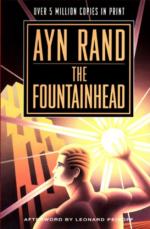|
|
The Fountainhead Objects/Places
Architectural School of the Stanton Institute of Technology: School from which Keating graduates and Roark is expelled. It is built on the ideas of glorifying the past in architecture.
Frink National Bank: The last building designed by Guy Francon. It is beginning to rot and turn green, but it brought Francon prestige.
Dana Building: A perfectly logical building built by Henry Cameron; it looks very plain on the outside, but all of its tenants are extremely happy.
Columbian Explosion of 1893: A movement to bring all architecture back to classical times; all architects competed to see who could steal from the best sources.
Melton Building: Built by Francon. Commended for its use of horizontal lines to bring it down to the level of the people.
Benton Department Store: Built by the firm of John Erik Snyte while Roark is a designer there; all five designers draw plans and the best, Roark's, is chosen, then 'improved upon' by using parts of the others' drawings.
Cosmo-Slotnik Building: Peter Keating wins a contest to design this building, but only after going to Roark for help. This building secures his fame.
Manhattan Bank Company: A board of directors decides to give the commission for this building to Roark, but only given that he compromise; he turns them down.
Council of American Builders: Informally led by Toohey, chaired by Peter Keating, and including Gordon Prescott. Designed for the younger generation of architects.
the Aquitania: A hotel commissioned by Kent Lansing and designed by Roark; its construction is halted halfway. Eventually it is completed.
Stoddard Temple: Commissioned by Hopton Stoddard as a temple to whatever Roark deems appropriate; Roark makes it a temple to the human spirit. It is rejected by Stoddard, 'fixed' by other architects and turned into a home for children.
Janer's Department Store: The building in Columbus, Ohio, on which Roark works for months while Dominique is married to Peter.
I Do: The name of Gail Wynand's yacht; a response to all the people in his childhood who told him, 'You don't run things around here.'
No Skin Off Your Nose: A horrible play written by Ike which is highly praised by Jules Fougler and thus made popular.
Monodnock Valley: A resort home built by Roark.
The March of the Centuries: A huge failure of an exposition designed by a committee of architects, including Peter Keating, Gus Webb, and Gordon Prescott.
We Don't Read Wynand: A movement headed by Gus Webb railing against the Wynand papers, declaring Wynand immoral.
Cortlandt Homes: A government housing project; Peter wants this commission badly because his career is slipping, but knows he cannot design it well. He goes to Roark, asking him to do it for him, and Roark agrees; but when it is not built as Roark wants, Roark blows it up.
Wynand Building: The building Wynand has been waiting to build his whole life. The tallest building in New York, designed by Roark.
The Gallant Gallstone: A book glorifying giving up the self. Written by Lois Cook, promoted by Ellsworth Toohey and made a huge success.
The New York Banner: The newspaper run by Gail Wynand that gives the public exactly what it wants; but does not, as Wynand comes to realize, dictate what the people think.
Sermons in Stone: An architectural book written by Ellsworth Toohey that praises architecture that copies the past and makes itself accessible to the public, since the motivation for architects must be to serve.




